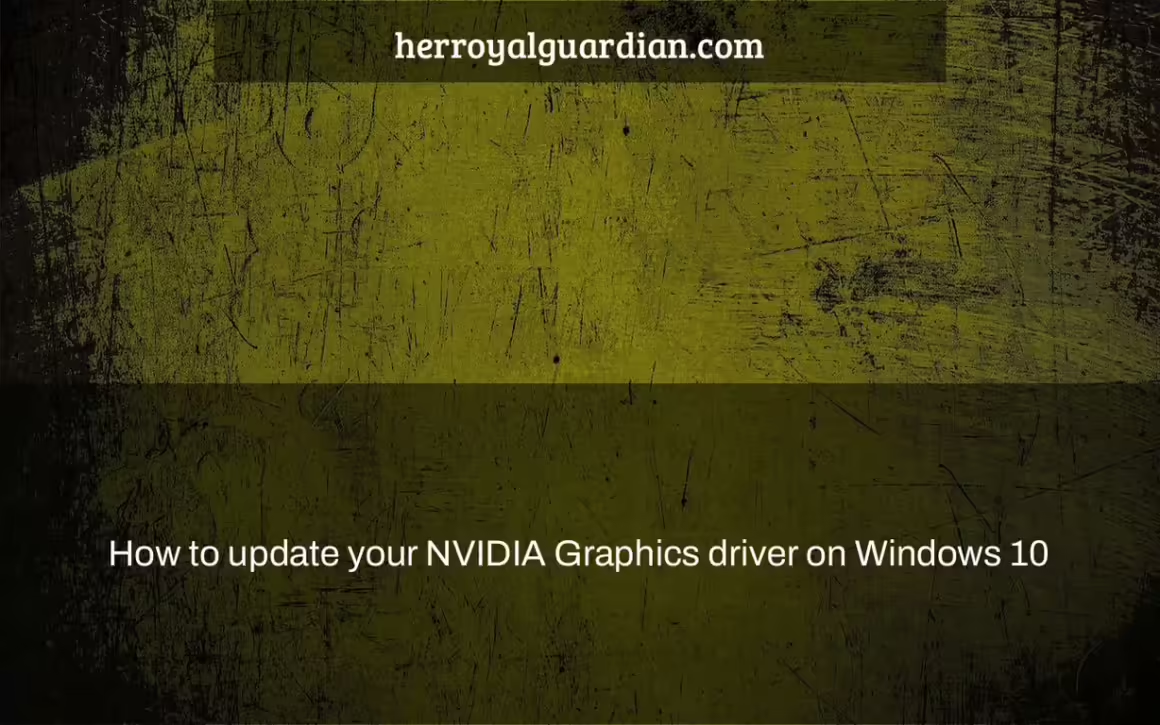The NVIDIA graphics card driver is a software program that enables your computer to use the GPU on your graphics card. When new updates for the drivers become available, you can update them by going through this process:
1) Download and extract the latest version of NVIDIA’s Graphics Driver from their website at www.nvidia.com/Downloads/. 2) Open Devices and Printers in Control Panel 3) Right click on “Graphics Device” 4) Click Update Driver Software 5) Select Browse my Computer 6) Locate where it says C:\WINDOWS\System32\DriverStore 7-8-9), then load up that file 8). Once loaded, proceed with following steps 9): 10a). Install restarted as follows b)-10d): c–10f): d—11b)–12c)–13a). WARNING! This will wipe all previous versions of installed drivers off
Device Manager
The “NVIDIA Drivers” is a tool that allows for updating the NVIDIA graphics driver on Windows 10. The process takes about 20 minutes. Read more in detail here: nvidia drivers.
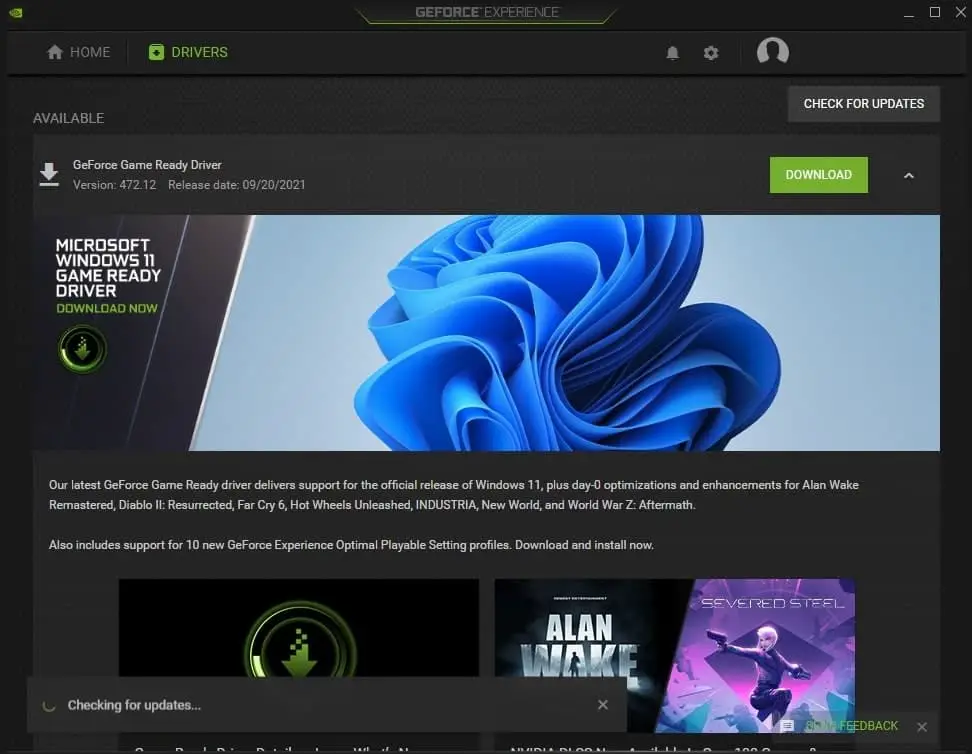 The operating system uses a graphics driver to interface with the visual graphics card. If you’re a PC gamer or a gaming user, you already know how important a graphics card is, as well as how important it is to keep your graphics drivers up to date. Installing the most recent driver update not only improves the speed of your device, but it also addresses previously reported problems and adds new features that increase game quality.
The operating system uses a graphics driver to interface with the visual graphics card. If you’re a PC gamer or a gaming user, you already know how important a graphics card is, as well as how important it is to keep your graphics drivers up to date. Installing the most recent driver update not only improves the speed of your device, but it also addresses previously reported problems and adds new features that increase game quality.
So, if you’re a gamer who wants to get the most out of your gaming experience, play games at their highest settings, or view movies at better resolutions, make sure your graphics driver is up to current. Because correct operation of the firmware necessitates optimization. This article will show you how to upgrade the NVIDIA Graphics driver on Windows 10.
How Can I Get the Latest Nvidia Drivers?
The Nvidia Graphics driver may be updated via the Nvidia GeForce Experience app, Windows Update, or Device Manager. If you’re having trouble installing a fresh driver, your best bet is to go straight to Nvidia’s website.
The Geforce Experience Software From Nvidia
The GeForce® ExperienceTM suite from NVIDIA is an official utility for managing your Nvidia drivers and game settings. When a new driver is released, it updates program and game files automatically. Here’s how to use this program to update your graphics driver: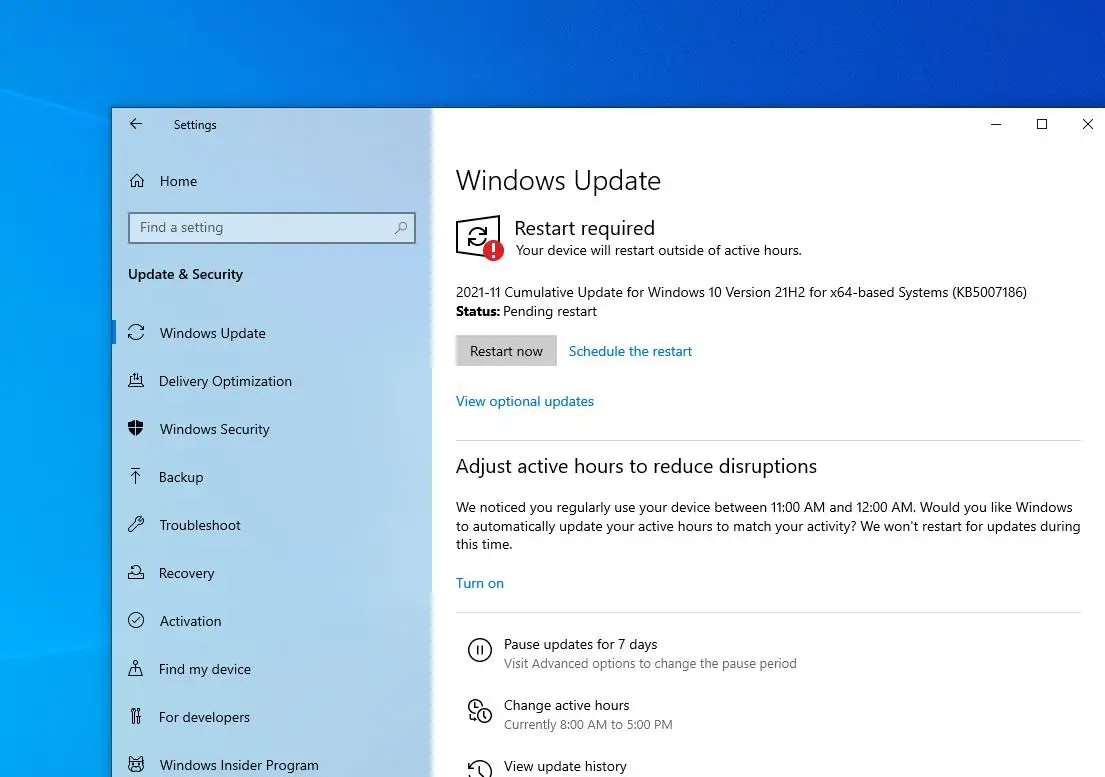
- First, get GeForce Experience and install it.
- If you don’t have an Nvidia graphics card or are using an earlier product, the installer will scan your system for compatible hardware. If you don’t have an Nvidia graphics card or are using an older product, you may face difficulties during installation.
- When the installation is finished, To continue, open the software and log in or create an account.
- Once signed in, go to the GeForce Experience home page and pick the Drivers tab, which also displays your most recent installation.
- To check for updates, go to the upper right corner and choose “Check for updates.”
- When asked, choose between an Express or a Custom update. Express updates are installed right away, while Custom updates need you to fill out a form with your choices.
- The most recent Graphics driver will be downloaded, and the apps will notify you when it is complete.
- To make the modifications take effect, restart your computer.
Windows Device Manager Is a Program That Allows You to Manage Your Drivers
You may also use the Windows Device Manager to update your drivers, including the NVIDIA Graphics driver.
- To open the Windows Quick Link menu, press Windows key + X at the same time and choose Device Manager, or click the m key.
- This will show a list of all installed device drivers; identify and expand the ones you want. From the list of hardware, choose display adapters.
- Update the driver by right-clicking on your NVIDIA graphics card and selecting Update driver.
- Choose to search for drivers automatically and wait a few seconds while it attempts to locate and install the most recent Graphics driver for your computer.
- After that, restart your computer to effect the modifications.
Windows Update Should Be Checked
When you install the newest Windows updates, you’ll also get driver upgrades. However, unlike Device Manager, Windows Update does not always deliver the latest updates. On Windows 10, here’s how to check for updates.
- Press the Windows key and then choose Settings (the gear icon)
- To check for updates, go to Updates and Security and click the Check for Updates button.
- If there are any new Windows updates available, this utility will attempt to download and install them.
- By selecting Check update history on the same page, you can also view optional updates or confirm the most recent modifications to your driver.
- Once you’ve finished, restart your computer to apply the Windows update and put the changes into action.
Manually Download and Install Drivers
This approach is a little more involved since it requires knowledge of your graphic card, the manufacturer’s website, and the right driver version.
Figure out what kind of graphics card you have.
- To begin, use the command dxdiag to launch the DirectX Diagnostic tool.
- Look at the chip type item in the display tab; this is your graphics card model; write it down.
- To determine if you are using a 64-bit or 32-bit version of Windows, go to the System tab and look at the operating system entry.
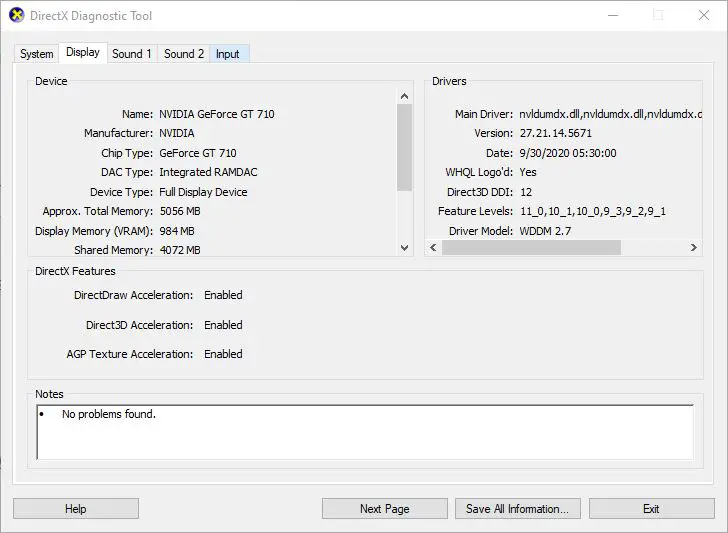
Download NVIDIA drivers from the company’s official website.
- Visit the manufacturer’s website here when you’ve found the model of your graphic card.
- You must then browse to the Downloads or Drivers area.
- You must now choose the Product Type, Product Series, and Product.
- After you’ve chosen your graphic card model, you’ll need to choose your operating system version. This refers to either the 32-bit or 64-bit version.
- Keep in mind that if you’re running a 64-bit operating system, you’ll need to choose the 64-bit version of the driver to obtain the best performance.
- Now, go to search and save the most recent NVIDIA driver to your local storage.
- To install the newest NVIDIA driver on your computer, locate the download folder, right-click on NVIDIA driver, choose run as administrator, and follow the on-screen instructions.
- After installing the updated Graphics driver, restart your computer to finish the process. You may now take use of the most recent firmware features and tools.
How to undo an NVIDIA driver upgrade
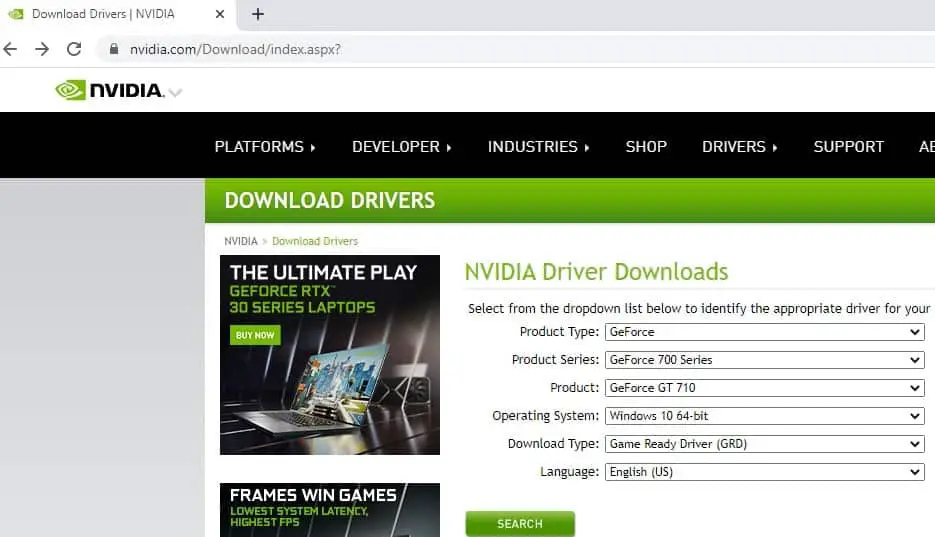
If you have an issue with the newest NVIDIA driver update, such as a black screen at startup or a blue screen error, please contact NVIDIA Support. In such cases, you may remove the current drivers and restore the prior version by rolling back the driver update.
- Select device manager by pressing Windows key + X.
- This will provide a list of all installed device drivers. Expand Display Adapters by scrolling down until you locate it.
- Right-click on the Nvidia device and choose Properties.
- Navigate to the Driver Tab in the Properties Window. After then, you’ll be presented with a menu of choices. To restore to the previous driver, choose Roll Back Driver.
- You’ll need to pick a reason for wanting to revert to the previously installed drivers. Select the most suited option.
- To restore to the previous drivers, choose Yes.
- If the rollback option is not accessible, you may delete your Graphics driver and reinstall a previous version.
If the rollback option is not accessible, you may delete your Graphics driver and reinstall an older version.
NVIDIA Graphics driver should be uninstalled.
You may also remove and reinstall the NVIDIA Graphics driver by following the instructions outlined below.
- Using the Windows key + R, type appwiz.cpl, and then click OK.
- The Programs and Features window will appear.
- Find the NVIDIA Graphics Driver and install it. Select Uninstall/Change by clicking on it.
- Confirm that you want to remove it, then follow the on-screen instructions.
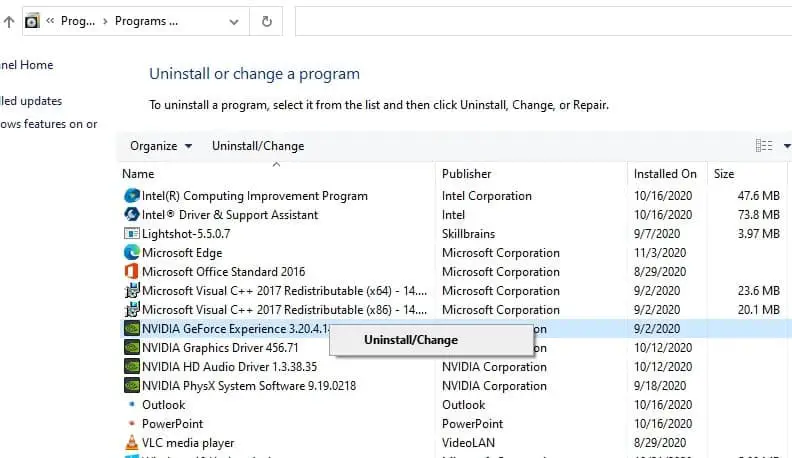 After the removal procedure is completed, restart your computer.
After the removal procedure is completed, restart your computer.
After you’ve deleted your driver and restarted your computer, go to the NVIDIA website and search for the drivers you wish to install using the Manual Search tool. To install the driver, first download it and then double-click it.
Contact NVIDIA’s customer support staff if you have any troubles with your driver upgrades, especially while utilizing GeForce Experience and the Control Panel tool.
Also check out:

Watch This Video-
The “nvidia geforce experience” is a tool that allows users to update their NVIDIA Graphics drivers. The process for updating your NVIDIA Graphics driver on Windows 10 is relatively easy and should take no more than 30 minutes.
Frequently Asked Questions
How do I Update my Nvidia graphics driver?
A: Update your graphics driver by following the steps in our article here https://www.geforce.com/drivers
How do I manually Update my graphics driver Windows 10?
A: The best way to update your graphics driver is by doing so manually. Firstly, you will need the latest version of Windows 10 installed. Then, download and install the drivers for your device from their respective manufacturers website. For example, if you have an Intel computer, you would want to go into this webpage on Intel which gives instructions on how to find a list of current compatible devices in order that they can be downloaded and installed one at a time as needed.: http://www.intel.com/content/dam/support/us/en/documents /drivers-software-windows10-autoupdate
How do I Update my graphics driver Windows 10 2021?
A: The best way to update your graphics driver is through the Windows Update feature. Just make sure you have automatic updates turned on, and itll be done in a jiffy!
Related Tags
- how to update graphics driver windows 10
- how to update nvidia drivers windows 10
- nvidia drivers download
- latest nvidia drivers
- nvidia control panel no update option

